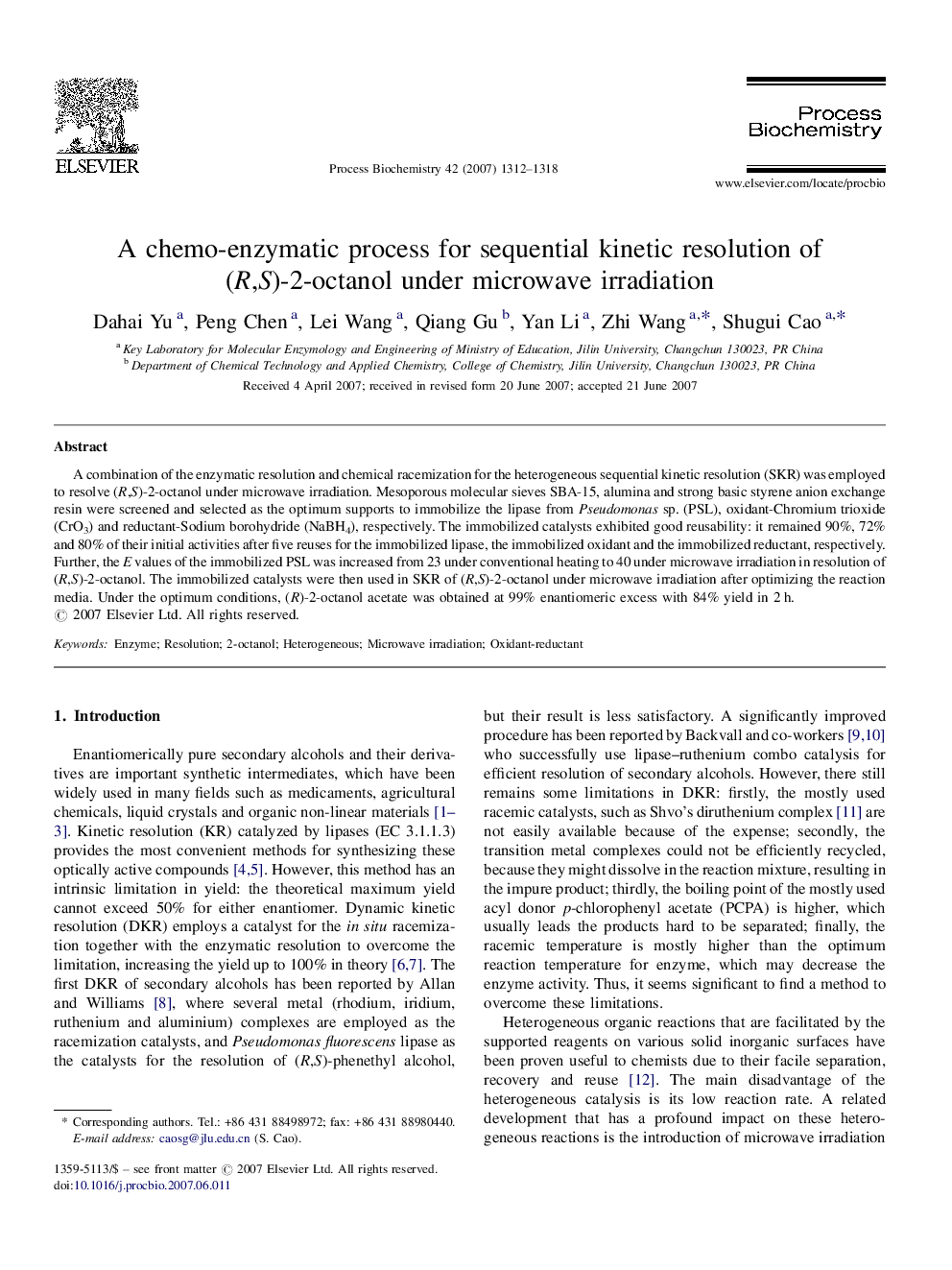| Article ID | Journal | Published Year | Pages | File Type |
|---|---|---|---|---|
| 35700 | Process Biochemistry | 2007 | 7 Pages |
A combination of the enzymatic resolution and chemical racemization for the heterogeneous sequential kinetic resolution (SKR) was employed to resolve (R,S)-2-octanol under microwave irradiation. Mesoporous molecular sieves SBA-15, alumina and strong basic styrene anion exchange resin were screened and selected as the optimum supports to immobilize the lipase from Pseudomonas sp. (PSL), oxidant-Chromium trioxide (CrO3) and reductant-Sodium borohydride (NaBH4), respectively. The immobilized catalysts exhibited good reusability: it remained 90%, 72% and 80% of their initial activities after five reuses for the immobilized lipase, the immobilized oxidant and the immobilized reductant, respectively. Further, the E values of the immobilized PSL was increased from 23 under conventional heating to 40 under microwave irradiation in resolution of (R,S)-2-octanol. The immobilized catalysts were then used in SKR of (R,S)-2-octanol under microwave irradiation after optimizing the reaction media. Under the optimum conditions, (R)-2-octanol acetate was obtained at 99% enantiomeric excess with 84% yield in 2 h.
